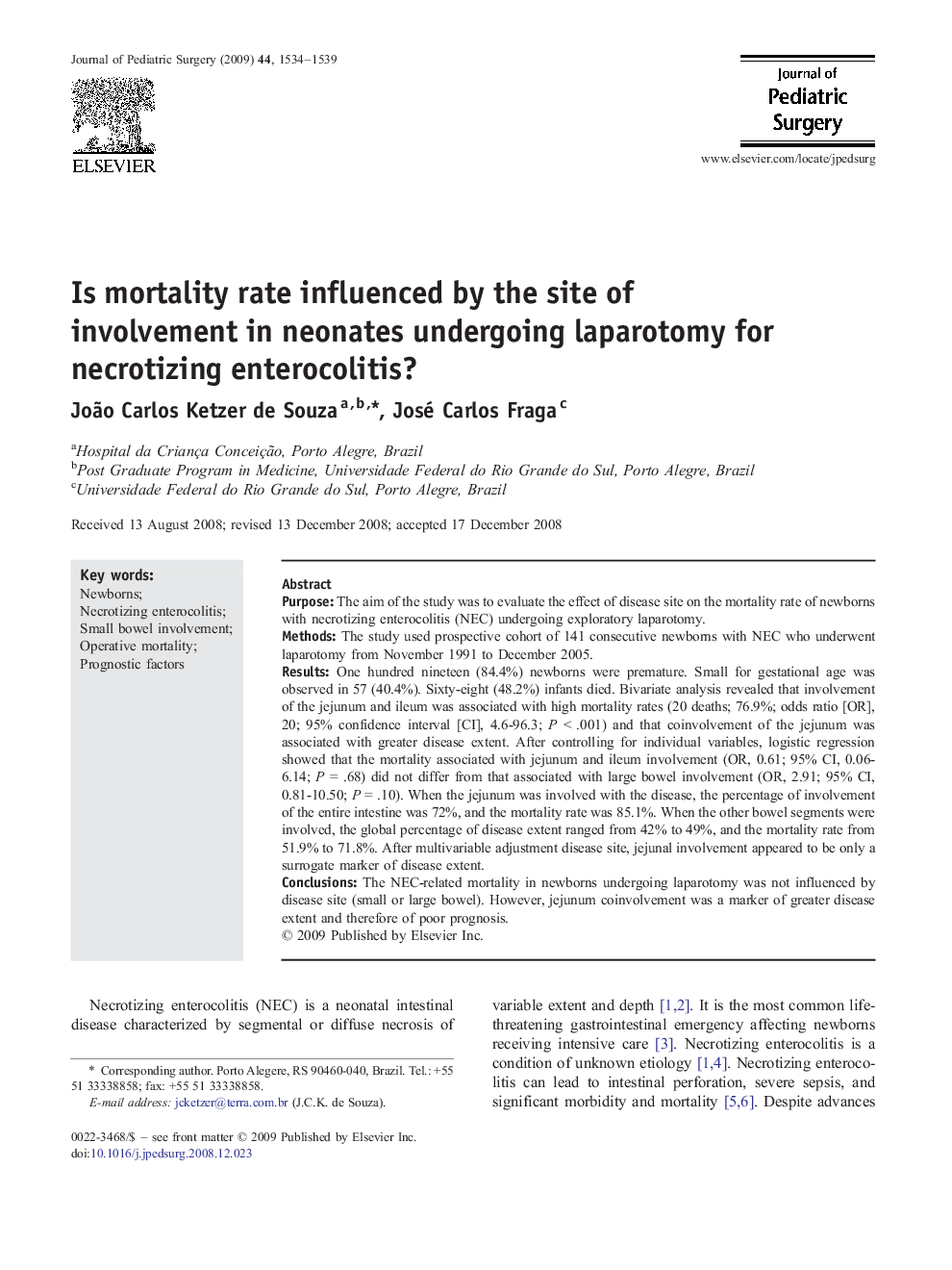| Article ID | Journal | Published Year | Pages | File Type |
|---|---|---|---|---|
| 4158187 | Journal of Pediatric Surgery | 2009 | 6 Pages |
PurposeThe aim of the study was to evaluate the effect of disease site on the mortality rate of newborns with necrotizing enterocolitis (NEC) undergoing exploratory laparotomy.MethodsThe study used prospective cohort of 141 consecutive newborns with NEC who underwent laparotomy from November 1991 to December 2005.ResultsOne hundred nineteen (84.4%) newborns were premature. Small for gestational age was observed in 57 (40.4%). Sixty-eight (48.2%) infants died. Bivariate analysis revealed that involvement of the jejunum and ileum was associated with high mortality rates (20 deaths; 76.9%; odds ratio [OR], 20; 95% confidence interval [CI], 4.6-96.3; P < .001) and that coinvolvement of the jejunum was associated with greater disease extent. After controlling for individual variables, logistic regression showed that the mortality associated with jejunum and ileum involvement (OR, 0.61; 95% CI, 0.06-6.14; P = .68) did not differ from that associated with large bowel involvement (OR, 2.91; 95% CI, 0.81-10.50; P = .10). When the jejunum was involved with the disease, the percentage of involvement of the entire intestine was 72%, and the mortality rate was 85.1%. When the other bowel segments were involved, the global percentage of disease extent ranged from 42% to 49%, and the mortality rate from 51.9% to 71.8%. After multivariable adjustment disease site, jejunal involvement appeared to be only a surrogate marker of disease extent.ConclusionsThe NEC-related mortality in newborns undergoing laparotomy was not influenced by disease site (small or large bowel). However, jejunum coinvolvement was a marker of greater disease extent and therefore of poor prognosis.
